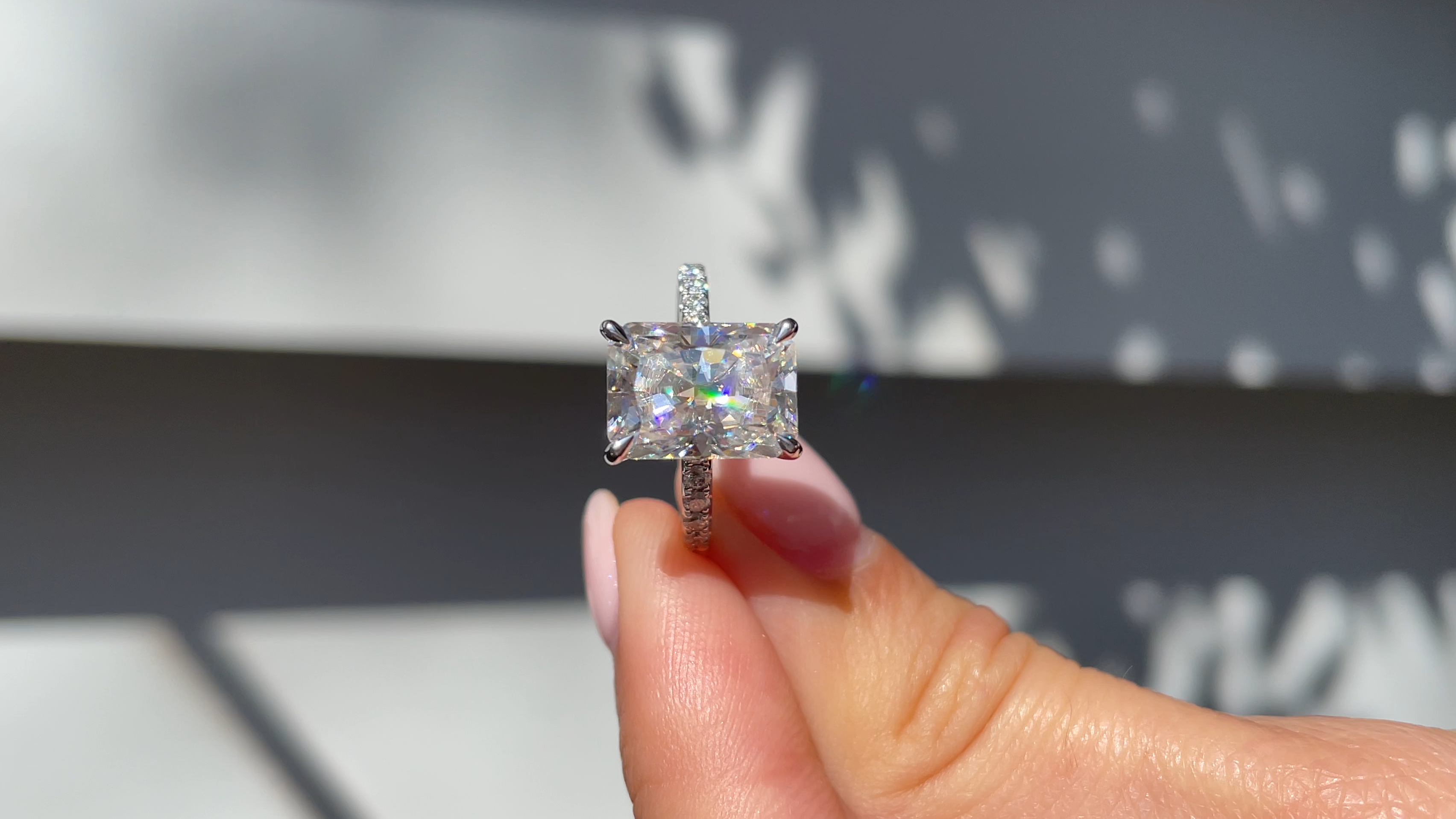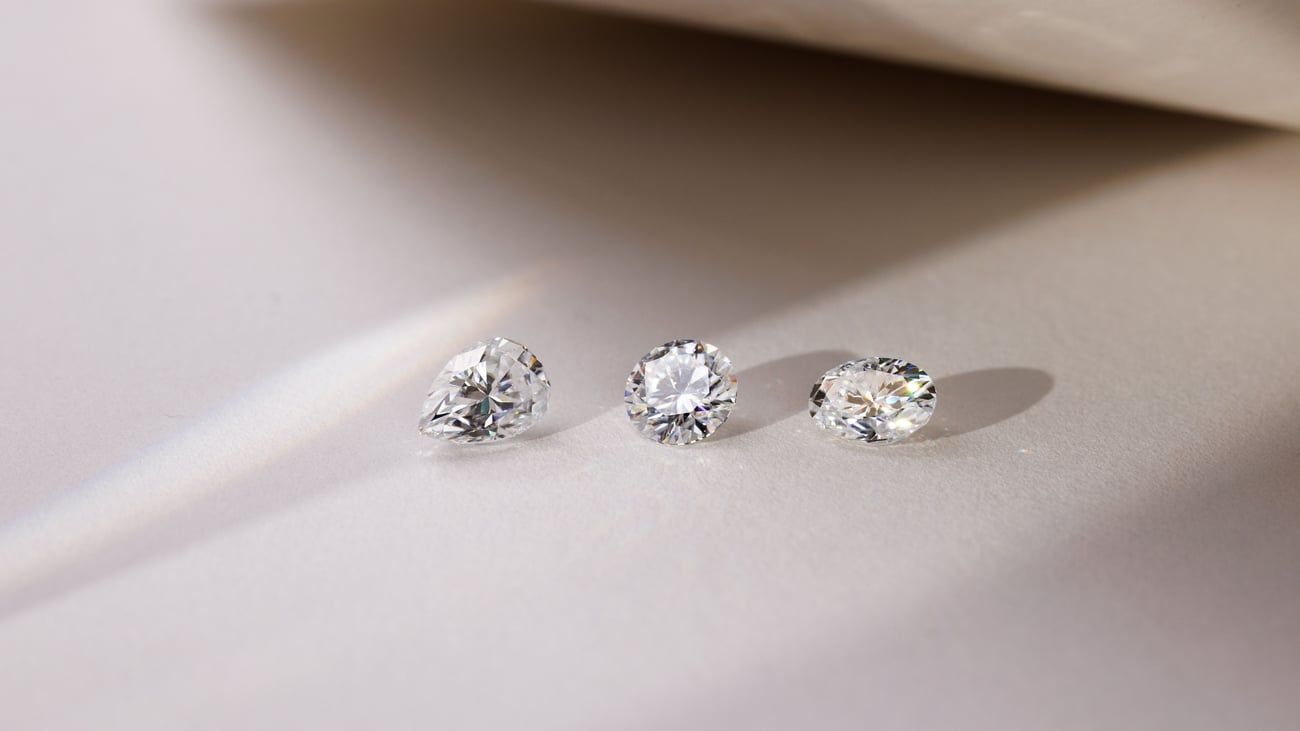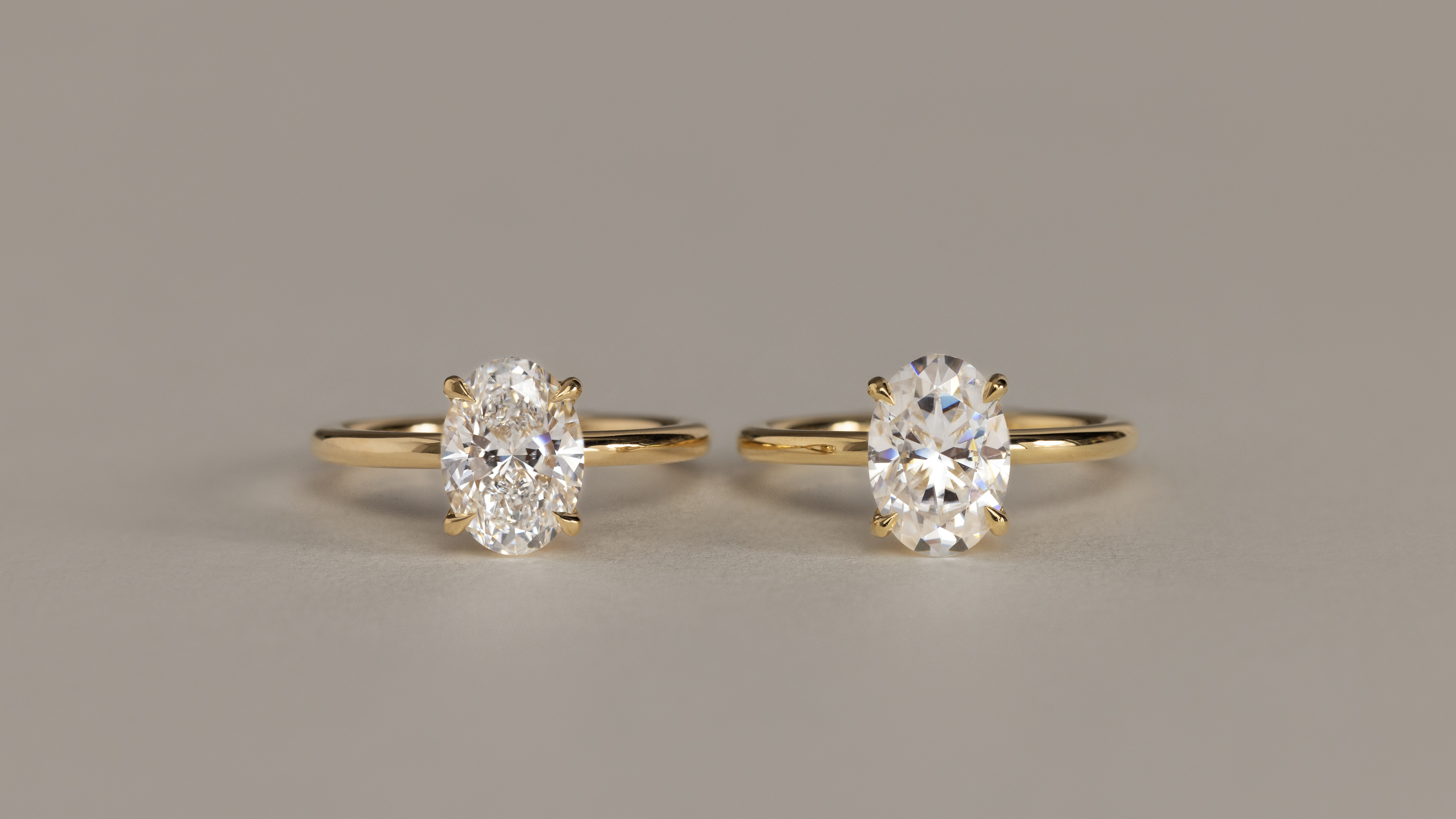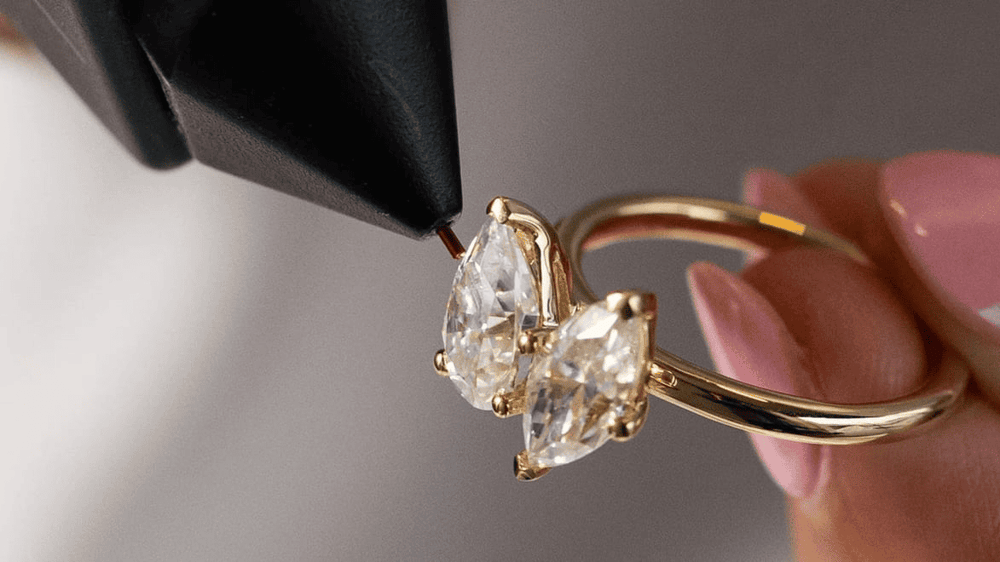
Although often compared to a diamond for its similar appearance, there is no such thing as a moissanite diamond. In the same way that an emerald or a sapphire is different to a diamond, moissanite is a real gemstone with its own unique beauty and chemical properties. As a sparkly, affordable and responsible choice, moissanite is rapidly becoming a gemstone of choice for those who want a break in tradition, or just simply love the unique sparkle that this gemstone has to offer.
Moissanite is Its Own Unique Gemstone
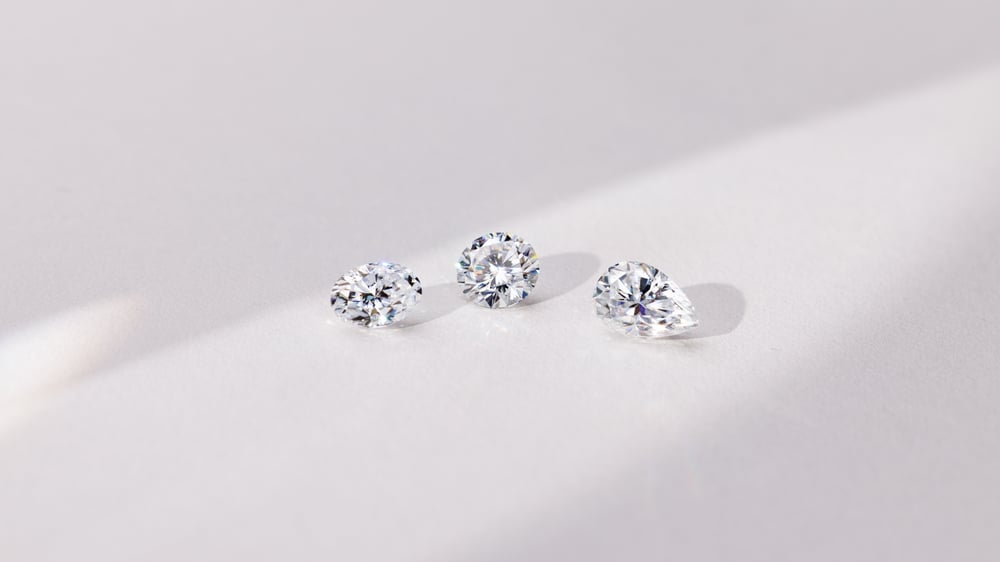
With origins literally out of this world, moissanite has a unique story of discovery. First unearthed in an Arizona meteor crater by Henry Moissan in 1893, the French scientist first assumed he’d discovered diamonds. However, he soon realised that the microscopic particles were made of silicon carbide and were an entirely new discovery – a gemstone that would share his name: Moissanite.
Natural moissanite particles are extremely rare but luckily for us, modern science allows them to be beautifully replicated in controlled laboratory environments. As a lab grown stone, this makes moissanite both an affordable option, as well as one that is responsible for the planet. Since moissanite does not require mining, you can be rest assured that your stone’s source is easily traceable and was created without the concerns associated with traditional gemstone mining.
Moissanite Has Unique Physical Properties
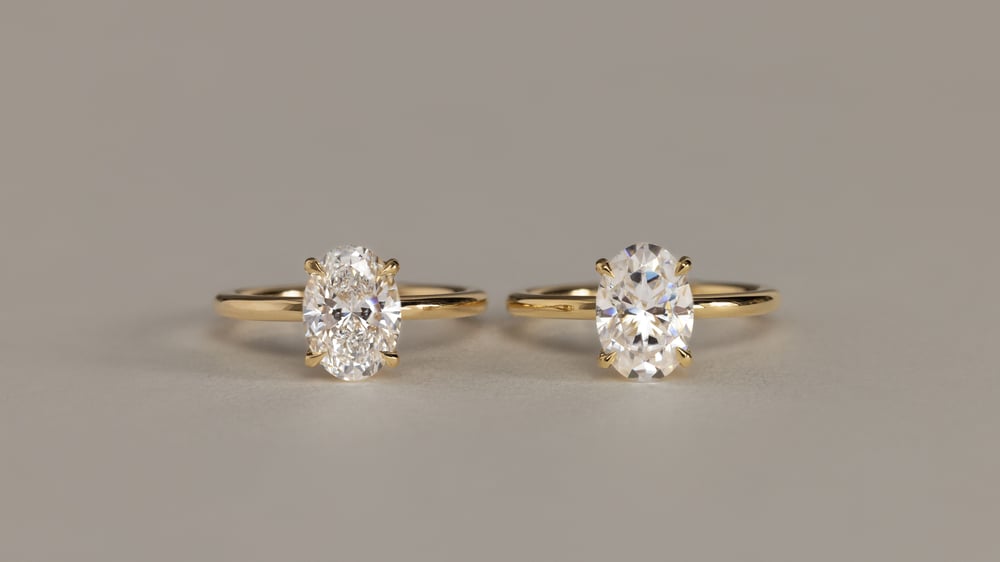
Although moissanite can give the illusion of a diamond appearance, it is its own unique gemstone with subtle physical differences that separate it from a diamond and other white gemstones. This includes differences in chemical makeup, hardness, clarity, colour and brilliance.
Chemical Makeup
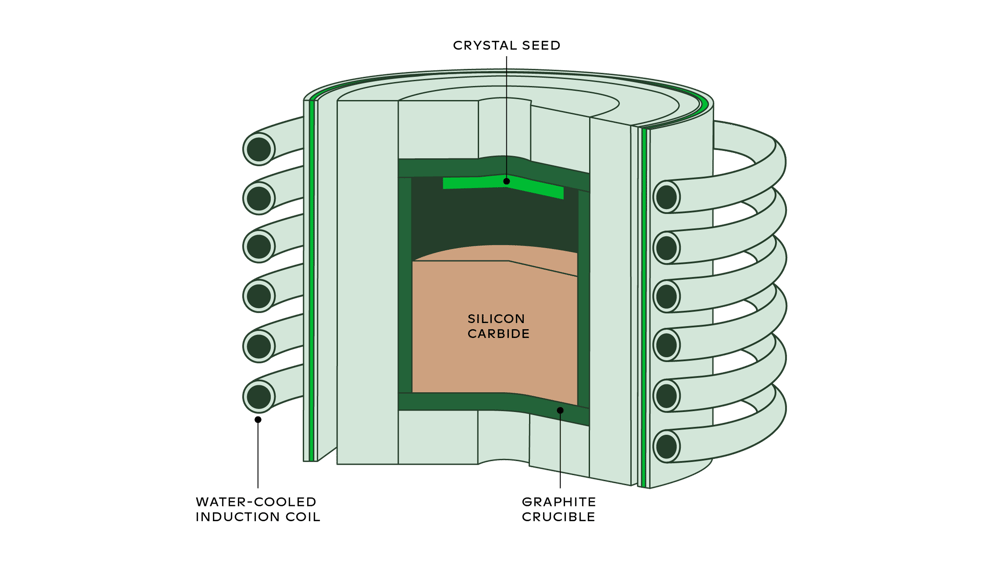
Unlike diamonds, which are made from carbon, moissanite is made from silicon carbide. As an extraordinarily rare, naturally-occurring mineral, moissanite in today’s jewellery is grown in controlled laboratory environments. Moissanite is grown using the Physical Vapour Transport (PVT) process. This intricate method involves sublimating silicon carbide in a vacuum, transforming it into a vapour that delicately deposits onto a seed crystal. The process starts by heating silicon carbide powder in a graphite crucible at high temperatures, causing it to sublime in a vacuum. The silicon carbide vapour then moves to a cooler part of the crucible, where it settles onto a seed crystal, forming a brilliant moissanite gem.
Hardness
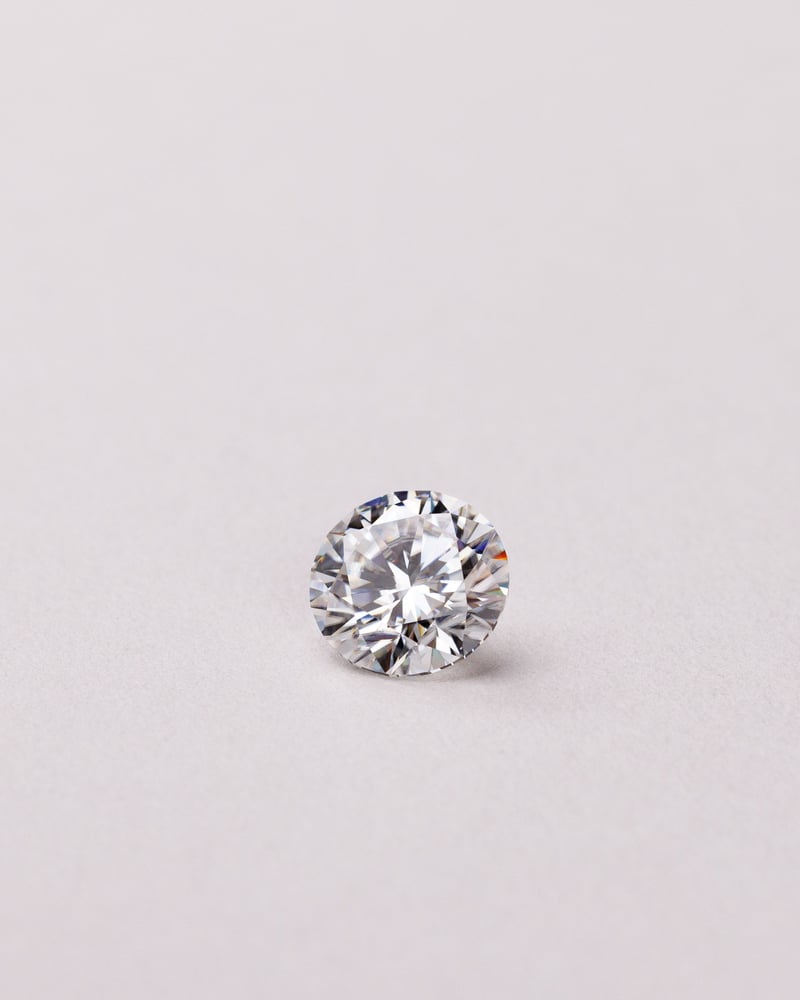

The hardness of a gemstone is measured using the Mohs scale, where 1 is the softest and 10 is the hardest. On this scale, moissanite measures 9.25 and is second only to diamond, which has a score of 10. As one of the hardest minerals on earth, moissanite is extremely durable and will last a lifetime of everyday wear, without ever fading or dulling in its appearance.
Clarity
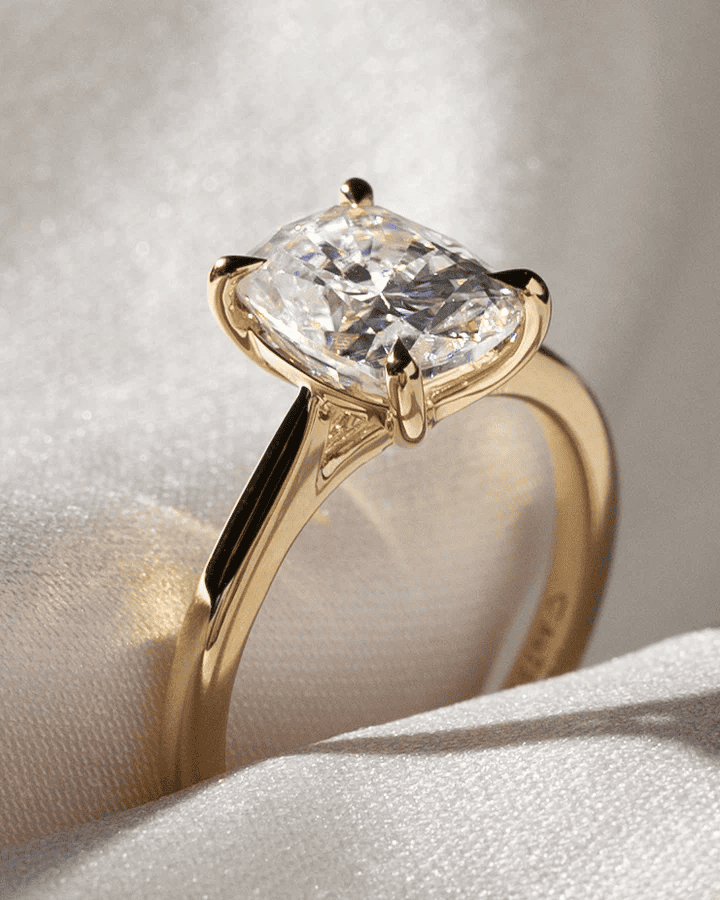
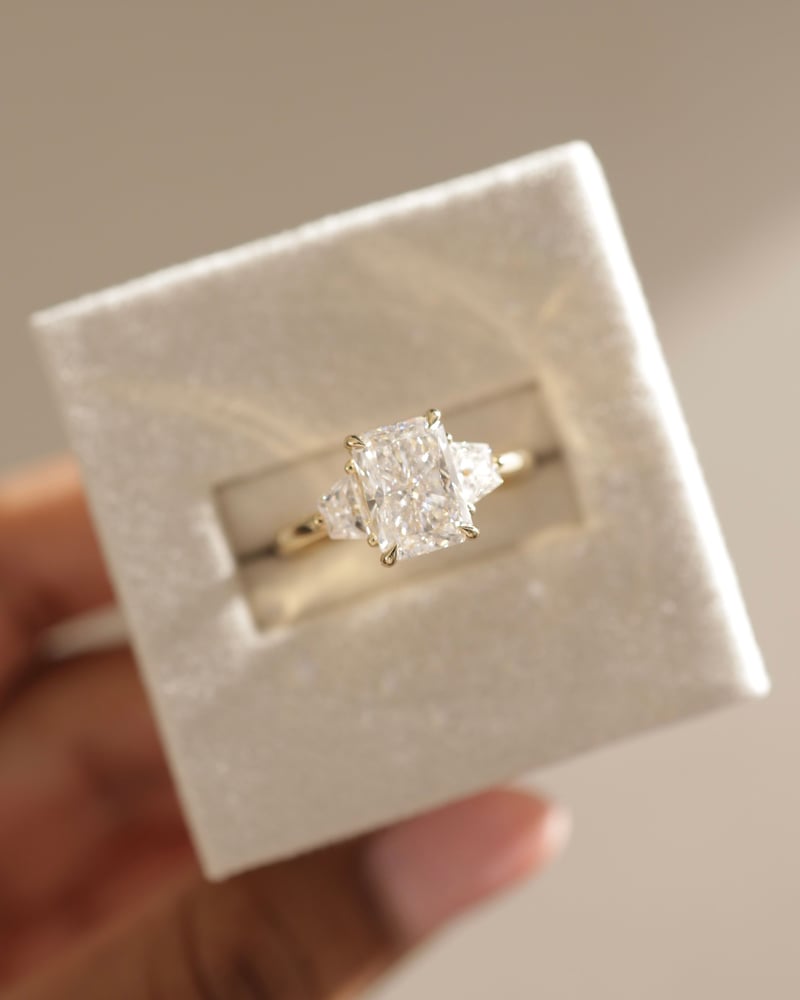
As many know, diamonds are graded according to the 4 C’s: Cut, Clarity, Colour and Carat. As a lab grown stone, the cut and clarity of moissanite rarely varies. This means that moissanite stones will almost always be close to flawless in clarity, with very small imperfections or blemishes that can only be seen under magnification. At Cullen Jewellery, our stones have a nearly perfect clarity grading of VVSI-2 (very very slightly included), ensuring your moissanite will always have a clear, bright sparkle. Just like the uniformity of the cut and clarity of moissanite stones, moissanite is uniformly graded as colourless (unless you opt for a coloured moissanite). Like diamonds, moissanite is a white gemstone but the difference in appearance will be seen in the way it interacts with light and its unique properties.
Brilliance and Fire
Moissanite has a higher refractive index than a diamond, meaning that when light enters a moissanite stone, it will bend more than within a diamond. This means there will be more small flashes of white light (brilliance) and greater levels of dazzling colour (fire). When exposed to sunlight, a moissanite stone will sparkle brightly and may exhibit a rainbow, almost “disco-ball” effect. Compared to a diamond’s subtle blue, grey and white light pattern, moissanite’s sparkle is more colourful – often the very quality that our clients fall in love with!
As a lab grown stone, moissanite will cost significantly less than a mined diamond, and is even more affordable than lab grown diamonds. Mined diamonds vary hugely in quality and are priced according to their cut, clarity, colour and carat. Moissanite, on the other hand, has very little variation in cut, clarity or colour and is priced according to size. This means that with moissanite, you can have the size and style that you always dreamed of without breaking the bank. Although there are certainly visual and physical similarities between moissanite and diamonds, there is no such thing as a moissanite diamond. As its own beautiful gemstone, moissanite has origins that are literally out of this world and its own stunning fire that outshines that of a diamond. With moissanite, you will never have to sacrifice quality for price and can rest assured knowing your moissanite stone will retain its sparkle for a lifetime.
Still deciding whether moissanite is for you? Book an appointment to visit our showroom and we will help you decide if it's the right choice for you!
